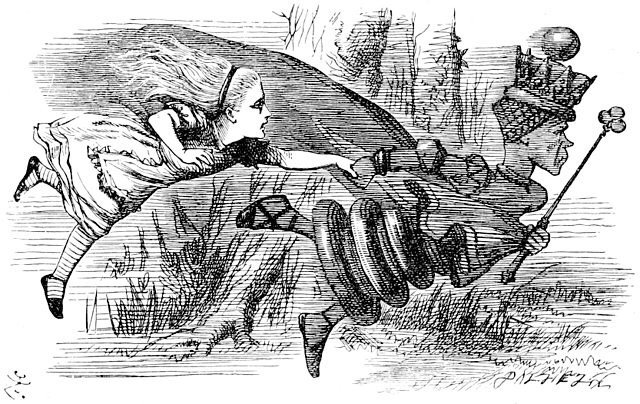
Business Agility
All organizations are constantly looking for ways to improve productivity, streamline internal processes, respond to changing business circumstances, and serve customers better and quicker.
But today’s ever-changing global markets present threats and opportunities at every turn. Since 2000, more than half the companies in the Fortune 500 have either been acquired or merged, gone bankrupt, or joined their peers in the graveyard of failed businesses. These organizations failed to recognize and respond quickly enough to the pace of change. Poor business agility led to their demise.
Business leaders are worried. A new research reveals that two thirds of C-suite executives believe that 40 percent of the Fortune 500 will not exist in 10 years.
Organizations must perform better and faster to remain competitive, as the Red Queen from Through the Looking Glass observed: “My dear, here we must run as fast as we can, just to stay in place. And if you wish to go anywhere you must run twice as fast as that.”
Asset Maintenance
As more product organizations are embarking on digital transformation and initiating industrial Internet of Things (IoT) projects, they call attention to critical business functions such as field service and asset maintenance.
Remote connectivity allows assets owners and maintainers to monitoring equipment and diagnose malfunctions remotely. In some instances, staff can resolve issues remotely by changing operation parameters or upload an updated software module.
When an onsite repair is unavoidable, service technicians are equipped with detailed work instructions and the necessary parts and tools and are well-prepared to remedy the problem.
And as failure prediction methods continue to mature, field service organizations will be able to become aware of impending failures sooner than before and will be better equipped to respond to them expeditiously and efficiently.
The industrial Internet of Things provides remote connectivity and telemetry capabilities that accelerate sensing and delivers better and faster response, resulting in improved the organization’s return on enterprise assets. At the same time, forward-looking organizations like Caterpillar use these capabilities to ensure they remain relentlessly focused on customer value.
Connected Consumers
We are in the beginning of a fast-moving wave of pervasive connectivity. Everything and everyone is connected.
Today, owners and users of all types of products turn to the Internet’s private and public forums and social media to look for product information, seek advice from peers as well as perfect strangers, and share their experiences and opinions—typically rants and complaints rather than praises—about products and services with anyone who would listen to them.
This habit of bypassing formal support channels and using web resources isn’t the purview of casual users anymore, and users of commercial production equipment also resort to the web in search of information and advice that is as good if not better than what’s available via formal channels. Product companies from all industrial sectors like Caterpillar, General Motors, Toyota, and Whirlpool are monitoring and participating in social media forums and use sophisticated social media analytic tools to learn what customers think of specific products, identify quality problems, and increase the accuracy of sales predictions.
Humans are becoming Internet of Things sensors!
The Connected Enterprise and The Digital Twin
To not only survive, but to compete and thrive in today’s highly disruptive environment, modern businesses need to build agility throughout the organization. Agile business processes give organizations greater capacity to obtain, analyze and act upon all product-related information.
A truly agile business needs every department—from research and development, to sales and marketing, from operations and manufacturing to corporate communications and PR, from legal to accounting and even HR—to adopt an agile business mindset and embrace principles of open innovation and collaboration.
Sometimes dubbed “Digital Twin,” the Internet of Things enables organizations to create a digital replica of the physical product that represents all phases of a product lifecycle and value chain constituents, including external customers and third parties. It allows product organizations to create an operational and behavioral digital model that is constantly interacting with actual products, monitoring their operation and the ways users are interacting with it.
The industrial Internet of Things and its Digital Twin surrogate deliver a stream of rich, objective and accurate information about product operations, quality of output, and customer interactions, forming an objective assessment of its state and a disciplined approach to managing change and building responsiveness.
Organizations should undertake a connected enterprise strategy that utilizes the IoT to enable higher capacity to sense and respond to changes in the internal and external environment quickly, precisely, and confidently, without losing momentum.
Image: The Red Queen (Sir John Tenniel, 1871)
This article was sponsored by Siemens PLM
